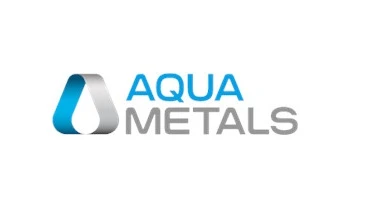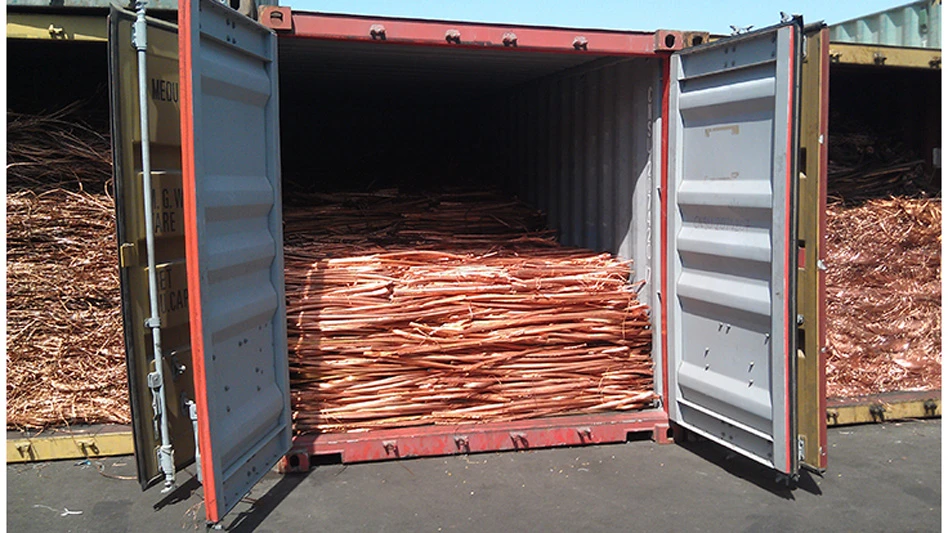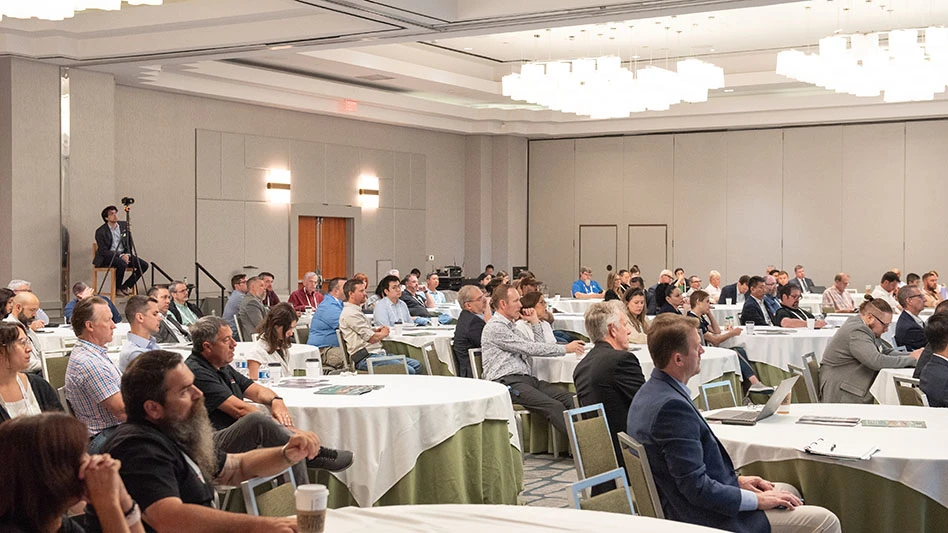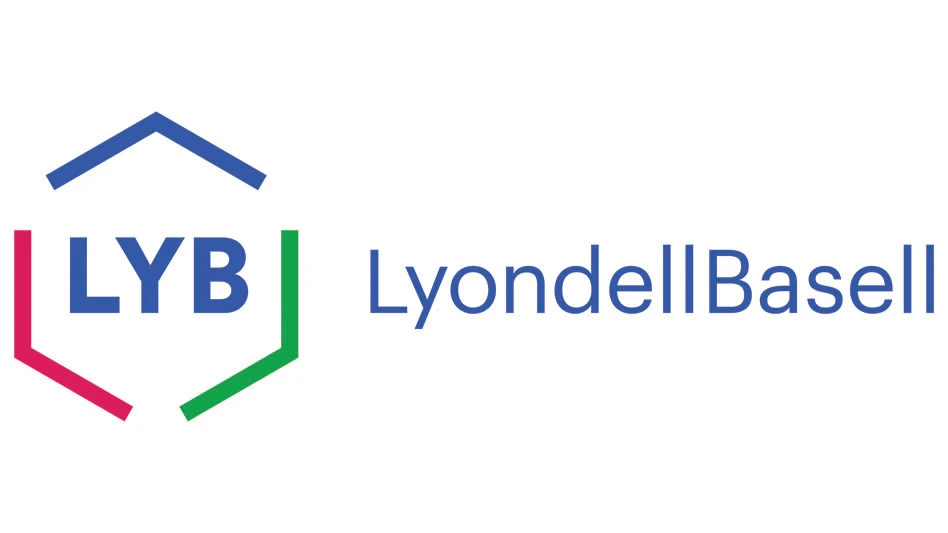 Shrink labels are a fantastic marketing tool employed by brands across the globe to help create emotional connections with their customers. They allow brands to use 360-degree billboarding on highly contoured bottles that grab shoppers’ attention. For competitive products like single-serve beverages, they have become a necessary tactic to help brands stand out in the sea of options for customers.
Shrink labels are a fantastic marketing tool employed by brands across the globe to help create emotional connections with their customers. They allow brands to use 360-degree billboarding on highly contoured bottles that grab shoppers’ attention. For competitive products like single-serve beverages, they have become a necessary tactic to help brands stand out in the sea of options for customers.
While these labels have a terrific benefit for marketers and product sales, recently the industry has become aware of the challenges faced by some recyclers in processing PET (polyethylene terephthalate) bottles that use shrink labels. The labels can create issues in accurately identifying the underlying bottle resin. Additionally, the labels can be hard to remove from the bottles; and, with the labels traditionally being made of materials with a density similar to that of PET, separation of label material from PET is difficult in some systems.
Consorting for change
As a resin supplier to this industry, Eastman Chemical Co. was keenly interested in identifying potential solutions, but we quickly realized that we simply lacked the necessary knowledge and expertise. In April 2012, Eastman proposed starting a consortium of interested companies across the full value chain for the shrink label industry to better understand the true nature of the problem and to identify potential solutions without creating unintended issues in the future.
At the time, when we brought this issue to the forefront in a public forum, most of the participants in this value chain, excluding recyclers, were unaware that a problem existed—in fact, many individuals challenged us on the validity of the recycling issues. However, we felt that helping educate the value chain was not only the right thing to do but also the best thing to do. We truly believed that the only way to find innovative solutions was to pull the best and brightest from this industry together.
We’re happy to report that the industry agreed. After the initial meeting in August 2012, the Full-Wrap Label Consortium continues to meet, with attendance growing and expanding. It has had full value chain participation, including recyclers, brands, label suppliers, film producers, ink suppliers, resin producers, recycling equipment suppliers, labeling equipment suppliers, independent test labs and others.
The focus of the meetings has evolved over time. When we started, the focus was almost exclusively on understanding the actual challenges that some recyclers were experiencing. As we’ve learned more about recycling PET, we have realized there is great variation from one recycler’s process to another’s. The variability in these processes complicates the identification and implementation of solutions.
Addressing complex challenges
One of the most significant lessons is that there truly is no “silver bullet” solution for this complex challenge. More recently, we have spent the majority of the meeting time assessing and understanding potential innovative solutions that did not exist two years ago when this effort began. We are moving toward a situation where brands could have a variety of potential solutions at their disposal to best meet the needs for their products and packages.
To this end, many new innovations have been developed and launched over the last couple of years to help address this challenge. The predominant request from the Association of Postconsumer Plastic Recyclers has been for labels that float. This solution would allow recyclers to leverage the sink/float tank as a method for separation of the shrink labels during the PET recycling process. The premise is that recyclers are currently using this equipment to remove polyolefin-based labels and caps from PET.
While several new floatable shrink labels have been launched recently, there are some potential challenges for adoption of floatable labels. One major concern is that the recyclers who struggle processing PET bottles with shrink labels are currently manually sorting these bottles out of their stream early in the recycling process. Recyclers will need to be well-assured a label is floatable and train their pickers before these bottles will be allowed to make it into their actual recycling stream. Also, the floatable labels offered today will not necessarily meet the needs for all brands and packages because of shrink limitations. For example, some brands will not be able to transition larger-sized containers of the exact same product in light of shrink limitations. There is the potential for additional confusion concerning which products should be pulled by the pickers and which should continue in the process.
In addition to floatable shrink labels, new technologies and innovations have been introduced and created. Specifically, recycling equipment has been introduced recently to help recyclers remove shrink labels. Also, new label concepts are under development to provide additional ways to help remove labels but without some of the drawbacks of floatable labels.
Delabeling isn’t a new concept in recycling; but, over the past two years, we have seen amazing advances in technology for delabeling equipment that can be used for all containers or for a side stream in a PET recycling process. Recyclers in the industry are operating on both setups today. Some of the manufacturers for this equipment include AMUT, Herbold, Sorema and STF. Through efforts conducted by participants in the Full-Wrap Label Consortium, we learned that using twin perforation on a shrink label can significantly increase the effectiveness of a delabeler. We are looking forward to continued tests on other delabelers in test facilities and at other recyclers. Delabeling equipment presents challenges as it can be quite costly to install and requires ongoing maintenance. However, with continued adoption of shrink labels in light of their market appeal, delabelers provide a way for recyclers to increase their yields with a positive return on investment.
Another exciting new innovation is a shrink label that deseams in the whole bottle wash process. This is a technology developed by Sun Chemical, an ink supplier to the shrink label industry. The label is designed to come apart in the whole bottle wash process—leveraging the conditions of the wash to make the label seam release. This is a very exciting potential solution because it would not require recyclers with wash lines to identify ahead of time which labels are employing this technology. Bottles created to deseam would simply come out of the wash process without labels. Recyclers could then use pickers to help remove any additional shrink labeled bottles that did not deseam automatically.
While this effort is still in development, it is a great example of the power of collaboration. Multiple players across the value chain have come together to help create film and labels and apply those labels to bottles for testing. A significant lesson was a better understanding of the actual conditions of a whole bottle wash line. Accurate knowledge of this environment in terms of time, temperature and caustic level is essential to create a label that will chemically debond in those conditions.
By bringing in the different areas of expertise, we’re moving closer to additional solutions to help improve the recyclability of PET bottles with shrink labels. Applying these labels effectively and efficiently is a complex process, so ensuring it can be done at the speeds demanded commercially is essential for a viable ultimate solution.
Strengthening the chain
Through the work of the consortium, we have established strong relationships throughout the shrink label value chain that now firmly includes recyclers. We have established a productive working relationship with the APR and many of its members, helping us to better understand their situation and to ensure that we do not create new challenges with solutions.
Sponsored Content
Redefining Wire Processing Standards
In nonferrous wire and cable processing, SWEED balances proven performance with ongoing innovation. From standard systems to tailored solutions, we focus on efficient recovery and practical design. By continually refining our equipment and introducing new technology, we quietly shape the industry—one advancement at a time.
Issues such as this one are likely to continue to emerge with evolving products and new sustainable solutions. In fact, it wasn’t too long ago that shrink labels were a preferred label type because they didn’t use adhesive. But, with the lightweighting of bottles and a significant increase in the use of shrink labels, they have evolved into a challenge for many recyclers.
While we’re still working toward additional solutions to improve container recyclability, it is clear that value chain cooperation and collaboration are critical.
The author is market development manager, sustainability, for Eastman Chemical Co., Kingsport, Tennessee.
Get curated news on YOUR industry.
Enter your email to receive our newsletters.

Explore the July 2014 Issue
Check out more from this issue and find your next story to read.
Latest from Recycling Today
- APR, RecyClass release partnership progress report
- Clearpoint Recycling, Enviroo sign PET supply contract
- Invista expanding ISCC Plus certification program
- Redwood partnership targets recycling of medium-format batteries
- Enfinite forms Hazardous & Specialty Waste Management Council
- Combined DRS, EPR legislation introduced in Rhode Island
- Eureka Recycling starts up newly upgraded MRF
- Reconomy Close the Gap campaign highlights need for circularity








